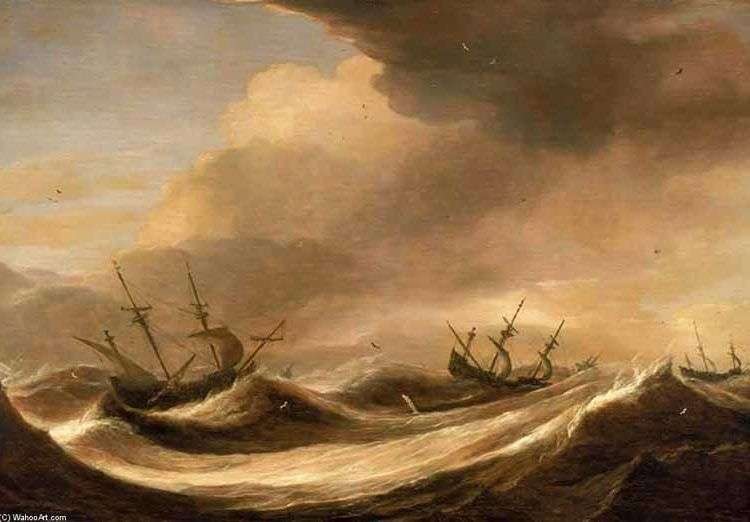Else Blumenstein had little time if she wanted to stay alive. Her husband, Franz, was one of the 3000 Jews the Nazis beat and humiliated during the famous “Night of Broken Glass” pogrom in Vienna. Without hesitation, she sold everything she owned gave it up to free her beloved from the Dachau concentration camp and embark with her son Heinz, just three years old, in the apparent security provided by the St Louis luxury cruise bound for the port of Havana.
In May 1939, the San Luis, with 936 Jewish refugees on board, sailed from Hamburg in search of the Promised Land. At the stern, Heinz, clinging to the arms of Else said goodbye to his father, who could not board. However, Franz Blumenstein got a plane ticket to Venezuela and from there he would manage to reach the Cuban capital.
The departure of the transatlantic had extensive coverage of the German Ministry of Propaganda. Adolf Hitler intended to show the world that his Reich was willing to allow free movement of the Jews if they so wished. Unfortunately for the Jews, “the salvation of the San Luis” was a detailed plan orchestrated by the Gestapo (secret police of Nazi Germany) and the propaganda machine of Joseph Goebbels.
Since the 1920s, the United States imposed on its territory a rigorous policy of immigration restriction in order to reduce the effects of unemployment and the instability caused by the global economic crisis. This attitude was followed by several Latin American countries, including Cuba, who imitated the Americans in the shielding of its borders.
While the St Louis was crossing the Atlantic, the Cuban anti-Semitic propaganda, funded by the Gestapo, created the conditions necessary to form a hostile public opinion towards refugees. Influenced by big money, Juan Prohias, founder of the “Cuban Nazi Party”, released on the radio and the press the misfortunes would bring to the country if the state was home to the Hebrews.
At dawn on Saturday, May 27th the St Louis arrived in Havana Bay. Since the day before, a crowd of friends, family, Jews and people in general filled the cove waiting for the famous ship. Within the crowd was Franz Blumenstein, who only thought of once again embracing his loved ones.
In response, the then President Federico Laredo Bru, issued a special order forbidding Jews to enter the city. The government’s position was justified by the law decree number 55, which prevented the entry of immigrants that represented a public charge to the state. Unlike tourists who traveled for pleasure, refugees require an entry visa, in addition to paying a sum of $ 500 per person to prove that they could support themselves.
Earlier, hundreds of Jewish souls saw Havana as a salvation of Nazi barbarism, but not having all the paperwork in order and because of the exorbitant sum desperate passengers began to conceive the worst: their return to Germany.
Of the 936 only 22 refugees were allowed to disembark. Max Lowe, number 23, when he saw the imminent future slit his wrists and jumped into the water, being rescued by the port authorities. Minutes before the return of the St Louis two American lawyers, with the help of some government official, could save six other expats. The ship sailed. 907 people remained on board, doomed.
Perhaps never before has so much pain and helplessness been lived until police boats escorted the liner to the edge of the bay. As the ship moved away, in sad spectacle, many of the relatives rented boats to chase the St Louis. Through tears and screams they were losing the faces on board. The parting was a wrenching moment that further heightened when the cruiser was lost in the ocean.
Nothing could be done. The St Louis sunk by greed of some and cynicism of others. Despite the efforts of Captain Gustav Schroeder, who never gave up finding a safe harbor, the St Louis had to return to Europe in the face of the refusal of the U.S. and Canada to receive refugees.
The Blumenstein family never got together again. Else and Heinz landed in Holland. They were safe until the Nazi divisions occupied Amsterdam in May 1940. When the great wave of deportations of Dutch Jews began, Else managed to hide the little one from the police. Shortly after, they moved north of the Netherlands, where the resistance hid them separately until, in 1943, the Nazis captured Else, sending her to Auschwistz. Heinz survived the war and at the end he was reunited with his father in the United States.
Of the 936 passengers aboard the San Luis, only 240 were able to survive the Holocaust. The unfortunate voyage, now the most famous scene in the history of Jewish refugees before the start of World War II, showed the true face “of free, democratic and civilized world” about the Jewish community of the time. Seventy-five years have passed since the events of the St Louis and despite the existence of new contexts; nests in man such insensitivity as once lived in the cruelest death camps.











I AM the Heinz Blumenstein. of this article. Hitler and the Nazis didn’t doom the passage of the SS St Louis. He received help from countries that preached Liberty, Equality, and Fraternity, starring the most influential country of all times, the USA under the leadership of FDR. These countries are the real and ultimate Killers of the Jews of Europe. What did we do to deserve this treatment?